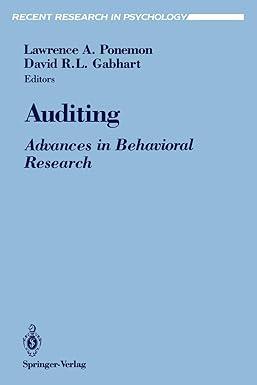Question
Business account in the general ledger on 1 June was $12,107. The subsidiary ledger contained the following accounts receivable accounts and balances at the same
Business account in the general ledger on 1 June was $12,107. The subsidiary ledger contained the following accounts receivable accounts and balances at the same date: A $2,330, B, $4,277 and C. $5,500. At 30 June, a summary of entries made in the journals shown were as follows.
- Sales journal: Recorded credit sales were: A $2,180,B. $1,670, C $1,780.
- Cash receipts journal: Cash amounts received from accounts receivable were (no discounts were allowed): C. $2,120, B $2,920, A. $2,013.
The business also uses sales, purchases, cash receipts, cash payments and a general journal to record transactions. For the month of July the following transactions have not been recorded in the journals:
1. Sold inventory on credit to A $3,900, invoice 759.
2. Received an electronic funds transfer from B. for $750, for payment on his account.
3. Issued an adjustment note to C for defective goods sold on credit during July for $160.
4. Purchased office supplies, $520, using the business debit card.
Calculate the ending balance in accounts receivable at 30 June for the following customers: A and B.
Step by Step Solution
There are 3 Steps involved in it
Step: 1

Get Instant Access to Expert-Tailored Solutions
See step-by-step solutions with expert insights and AI powered tools for academic success
Step: 2

Step: 3

Ace Your Homework with AI
Get the answers you need in no time with our AI-driven, step-by-step assistance
Get Started


